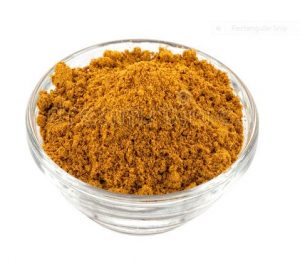 A few weeks ago I took a cooking with spices class at the International Culinary Institute in New York, and one of the things we did was create our own curry powder. Curry powder is a mix of various spices, not a natural occurring spice. As I learned in the class, spices and herbs come from different part of a plant, with the green, leafy part of the plant being a herb (e.g., basil, oregano, thyme, rosemary, parsley, mint), and the spice coming from the root, stem, seed, fruit, flower or bark of a plant or tree (e.g., cloves, ginger, pepper).
A few weeks ago I took a cooking with spices class at the International Culinary Institute in New York, and one of the things we did was create our own curry powder. Curry powder is a mix of various spices, not a natural occurring spice. As I learned in the class, spices and herbs come from different part of a plant, with the green, leafy part of the plant being a herb (e.g., basil, oregano, thyme, rosemary, parsley, mint), and the spice coming from the root, stem, seed, fruit, flower or bark of a plant or tree (e.g., cloves, ginger, pepper).
My view on cooking is to be very light on the sugar and salt, and to add flavor through various spices, like peppers, chili flakes, paprika, curry, etc. In store bought food, and in most restaurants, flavor is added with salt and sugar, which over the long term can cause health problems. Another lesson from the class, was that if you are going to use butter in a recipe, only use unsalted butter, this way you can control the taste of the food without having the salted butter add flavor.
So in the class, the instructor provided us with the following recipe for curry (with equal portions, except for cloves, which should only include one to three cloves)
- Fennel Seed
- Cumin Seed
- Whole Fenugreek
- Yellow Mustard
- Whole Cardamon
- Coriander Seed
- Cloves (only up to 3)
- Optional: Madras Curry Powder for color
All the ingredients should be put in a coffee grinder and mixed until a powder is created. Store in a tight container. I would suggest taking a vegetable, like cauliflower or broccoli, putting it in a microwavable container, spraying it with olive oil, sprinkling the vegetable with the curry mixture, and then microwaving the vegetable, Time in the microwave will vary depending on the size of vegetable, but at least a few minutes over a high setting. Enjoy.